If you have severe acne, eczema or psoriasis on your face, a probiotic face cream might just be your miracle cure!
First off, probiotics are live bacteria or yeast that are good for health. They naturally occur in the body. In fact, the body is filled with both good and bad bacteria.
The good bacteria keep the bad bacteria at bay so they don’t cause any harm. But when an imbalance occurs, that is, the bad bacteria multiply very fast that the good bacteria can’t control them fast enough, that’s when health issues form. Even stuff like acne is caused by bad bacteria taking over.
That’s why it’s important to eat a diet rich in good bacteria. I try to take homemade kefir everyday to keep up my supply of good bacteria. To make sure the good prevails over the bad. Yup, kefir is a probiotic food and so is raw apple cider vinegar, yogurt and coconut water too.
So now we know what probiotics are, let’s find out how to incorporate them into a face cream to create a DIY Probiotic Face Cream!
DIY Probiotic Face Cream Recipe
Note: All the ingredients used are safe for acne prone skin, they won’t break you out at all! Enjoy ~
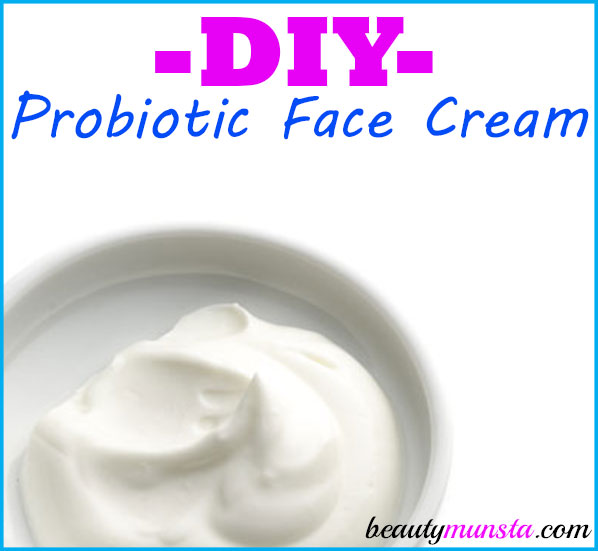
What you need
- ¼ cup shea butter (where to get it)
- ½ tsp raw honey (where to get it)
- 1 tbsp aloe vera gel (where to get it)
- 2 capsules probiotics (where to get it)
- 7 drops tea tree essential oil (where to get it)
- 5 drops lavender essential oil (where to get it)
- 5 drops geranium essential oil (where to get it)
- Double boiler (where to get it)
- Hand mixer (where to get it)
- 4 oz amber glass jar (where to get it)
Directions
- Begin by melting down the shea butter to liquid form. All you need to do is place it in a double boiler over low heat on the stove top.
- Once it liquefies, remove from heat, let it cool for 2 minutes then stir in the raw honey and aloe vera gel.
- Now let the mixture cool off in the refrigerator for about 15 minutes. This will make it solidify a bit. That’s what we want. Don’t let it begin very hard though, it should be soft enough that it dips down when poked with your finger (clean finger, of course).
- When the time is up, get out your hand mixer and start whipping the mixture into a fluffy white cream.
- Empty 2 probiotic capsules into the cream then add the essential oils, drop by drop.
- Whip up the cream again until the probiotics and essential oils are well-incorporated.
- Scoop your DIY probiotic face cream into a sterilized amber glass jar. Store in a cool dry place.
- Use a pea-sized amount all over your face as a face moisturizer.
Please go ahead and make this DIY probiotic face cream! It gives incredible results for severe acne, eczema and other irritated skin conditions on the face! xoxo

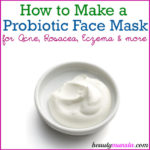
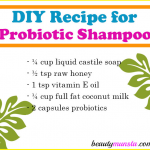
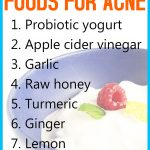
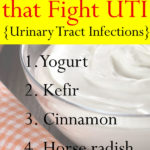
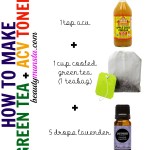
There is no Argan oil on the ingredients list. How much should be added?
t
Janet, argan oil wasn’t supposed to be included in the recipe. Thanks for pointing out the typo 🙂
What is the shelf life of this probiotic cream
3 months plus. Make sure to store it in an amber jar away from sunlight. Keep it away from water and other contaminants as well!
Hi what would be the shelf life of this product as is….and if it is not long what could I add to prolong it? thanks.
I don’t get this. Wouldn’t the tea tree oil kill the bacteria? Can bacteria survive in shea butter, honey and aloe? It seems like it’s counterproductive to mix bacteria with anti-bacterial ingredients?
Tea tree oil isn’t a preservative. Aloe contains water. Germs grow in water.
But honey and tea tree oil both have strong anti-bacterial properties, do they not?
I mean, my initial comment was that I don’t understand how you can have a “probiotic” serum that contains tea tree oil, because it seems that tea tree oil would kill the beneficial bacteria. I understand that tea tree oil might not be a sufficient preservative to keep it germ-free in the long run, but I think it’s counter-productive to mix probiotics and tea tree oil in the first place, how could it not kill many of or even all of the probiotics that you’ve put in there?
Hmmm; I hadn’t considered that. Probiotics are bacteria, after all, so between the actions of the honey, tea tree, and preservative, there may not be any probiotics in the resulting face cream! Now that you mention it, it’d prolly be more effective NOT to include anything with an anti-bacterial action in a probiotic anything.
Some of the recipes here aren’t … as well-considered as they should be.
When i have questions like this-which i always do-i look up studies. I was surprised to find out that honey does not kill probiotics. It apparently makes them more effective. Here’s one i bookmarked but i aways read several. This refers to intestinal microflora so it’s possible that the digestive enzymes neutralize the antimicrobial effects of honey in a way that wouldn’t happen on your skin but it doesn’t sound like they put the combination in gastric acids in their experiments.
In regards to the comments about preservatives-i was also surprised to find out that ozone is such a good preservative-they’re using it in food production and water treatment. You can get safe to use on your skin ozone in olive oil. i’ve been using it in all the various concoctions i want to test out and have left things sitting out for weeks to see if it goes off or begins to grow mold (including in things that have water or aloe or things like coconut milk. So far-nothing. i also read studies about why ozone doesn’t kill probiotics (both of these are not the pubmed/ncbi studies, but they say the same things. i bookmarked them because they’re easier to read/understand) Doing your own research is the best way to get clear in your mind what you’re wanting to do and how to do it 🙂
honey: https://bmccomplementalternmed.biomedcentral.com/articles/10.1186/1472-6882-6-6
Ozone: https://trulyheal.com/does-ozone-kill-good-bacteria-too/
I’m not sure how “strong” either’s antibacterial action is,, but THEY’RE NOT PRESERVATIVES, which not only protect against bacteria but also funguses and oxidation. Preservatives do a LOT more than guard against bacteria. Look ‘em up so you’ll know how they’re keeping you safe!
Hi, Lorna:
Have some probiotic info to add, and am addressing you since you had the good sense to wonder about preserving the little buggers. ☺️
After thinking on it really hard for days, I decided my best course of action was to use a mask (the wet paper kind) to get the probiotics into my face. I have about a hundred little dried disks I use when I need a mask: I soak them in the substance I feel like using as a mask, they expand, and then I apply to my face.
That way, I always have fresh probiotics, and no need to worry about preserving ‘em: I simply open a capsule, pour it into a jar, add some distilled water, add the mask disc, then shake. Put the mask on my face, read for half an hour, and the probiotics do whatever it is they do.
This part here is why I was spurred to compose this message: after last week’s probiotic mask, I put the cap back on the jar and then it fell behind something and i forgot about it. I found it just now. It had had probiotics and distilled water in it. It still has a little left … along with four black furry lumps of mold. ?
My last mask was Wednesday, so it took just five days to grow those disgusting little things.
This illustrates why preservatives are so important, though anyone following this recipe will have discovered this on their own, too. I gather the process of bacterial growth is sped up by including live organisms.
Oh, and I never *did* think up a way to add probiotics to something and preserve them. Mind you, I have no education in these matters; I’m merely a well-read hobbyist who finds cosmetic chemistry fascinating. That’s why I decided a mask, using fresh solution each time, was the best course of action. Nothing is stored.
You’ll either need to add a preservative (Germall, Optiphen, etc), or else use it up within a week (if kept in the fridge) or a day (if not) because you’ve got a germ farm there. Because there’s water in it, and food for germs, it’s gonna grow bacteria. Well, it starts off with bacteria in it because you didn’t mention sterilizing ANYTHING, so ‘re behind before you start.
If you’ve got problem skin, the last thing you need to be putting on it isn’t bacteria, fungi, and other yuckies! Be careful with DIY, folks; this is you’re FACE! ?
This wouldn’t need any further preservation because several of the ingredients already act as preservatives. Honey, tea tree, and aloe are all antibacterial as well as antifungal. Yes, aloe has a water content, but presuming you’re using a purchased aloe product from a store (not fresh from the plant), it’s already been processed to extend it’s shelf life. Mixing them would not compromise their individual shelf lives. This mixtures shelf life would last as long as the soonest expiration date of the individual ingredients, no sooner. I would probably refrigerate because of the sensitivity of the probiotics, but it’s not going to go bad or grow anything harmful before it’s predetermined expiration date.
However, Lorna’s concern has merit. Tea tree is a pretty potent antibacterial and it doesn’t differentiate between “good” bacteria. It would essentially negate the benefits of the probiotic. However, another antibacterial essential oil like oregano, that doesn’t kill off good bacteria, would be a good alternative. It targets bad bacteria while preserving the good, and it is a potent antifungal.
Don’t the essential oils kill the probiotics? I’m sure they are both healing, but I would make 2 separate mixtures & alternate. Use one in the evening & one in the morning.
What if you ferment everything before putting it in the mixture with plenty of preservatives???, probably come out with a slightly different product look sure, but it seems the best if you’re going for like a multi-week or month long concoction.